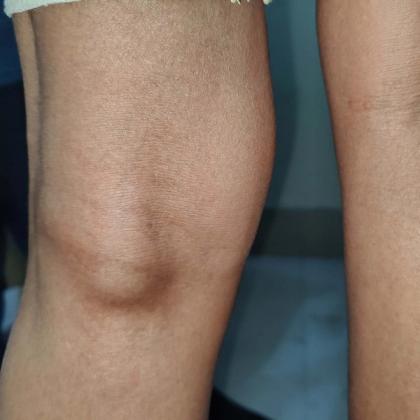Go to /account/subscription-details page
This podcast episode is worth 0.23 CPD credits. Upgrade to Pro
Baker’s cysts commonly present in primary care. In this episode, Dr Kate Chesterman discusses the pathophysiology, underlying aetiology and management options for this condition, describing possible differential diagnoses and indications for investigations. She also explains the self-care options for those with minimal symptoms and how to escalate treatment, as well as when to consider a referral.
Key take-home points
- Baker’s cysts are not true cysts but a fluid-filled distension of the gastrocnemius semimembranosus bursa.
- They frequently occur secondary to underlying knee joint pathology, resulting in excess synovial fluid.
- Examination will often reveal a bulge in the medial popliteal fossa that is smooth, fluctuant and transilluminates with a pen torch.
- The bulge is frequently tense when the knee is fully extended and softens or even disappears with the knee flexed. This is known as Foucher’s sign.
- Deep vein thrombosis must be excluded in patients with a Baker’s cyst and lower leg swelling.
- History and examination may be sufficient to make the diagnosis, but investigation with ultrasound may be helpful to confirm the diagnosis and rule out other pathologies.
- Ultrasound is always recommended in children presenting with a popliteal swelling to confirm the diagnosis and rule out other serious pathologies.
- Mild symptoms can be managed with elevation, rest, a knee support and simple analgesia.
- Referral may be required if the diagnosis is unclear, if the symptoms are troublesome despite conservative measures or if the cyst is very large.
- A referral may also be needed to optimally manage any underlying joint disease.
Key references
- NHS. 2021. https://www.nhs.uk/conditions/bakers-cyst/.
- Lui TH. BMJ. 2016;353:i2929. doi: https://doi.org/10.1136/bmj.i2929.
- BMJ Best Practice. 2024. https://bestpractice.bmj.com/topics/en-gb/1044.
- NHS Tayside. https://www.nhstayside.scot.nhs.uk/WorkingWithUs/ReferralHelpSystem/PROD_354510/index.htm.
- NHS Cambridge University Hospitals. 2023. https://www.cuh.nhs.uk/patient-information/popliteal-cyst-information/.
- Oxford University Hospitals NHS Foundation Trust. 2022. https://www.ouh.nhs.uk/patient-guide/leaflets/files/78616bakers.pdf.
- Patient. 2021. https://patient.info/doctor/bakers-cyst-pro.
- GPnotebook. 2024. https://gpnotebook.com/en-GB/pages/musculoskeletal-medicine/bakers-cyst.
Create an account to add page annotations
Annotations allow you to add information to this page that would be handy to have on hand during a consultation. E.g. a website or number. This information will always show when you visit this page.
